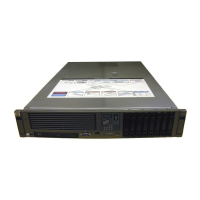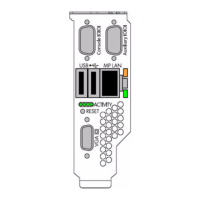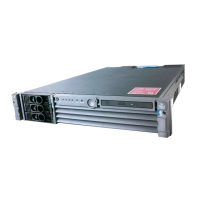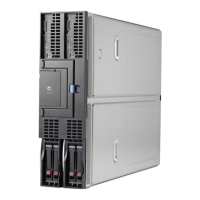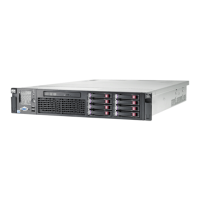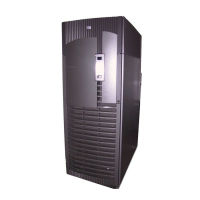HP Array Configuration Utility 59
Viewing SSD physical drives
The ssdphysicaldrive keyword is a valid target for the show command, and it outputs the solid state
physical drives on the specified controller.
Syntax:
<target> ssdpd all show [detail]
where the target is any valid controller.
Example commands:
controller slot=5 ssdpd all show
controller slot=5 ssdpd all show detail
Viewing SSD information
The ssdinfo keyword provides a summary for solid state drives for the specified controller.
Syntax:
<target> show ssdinfo [detail | summary]
Command examples:
controller slot=1 show ssdinfo
controller all show ssdinfo
controller all show ssdinfo detail
controller all show ssdinfo summary
Smart Caching in HPACUCLI
HP Smart Caching allows a caching logical drive to be created on a solid state physical drive, to be
associated with an existing data logical drive to provide a performance increase.
Command Examples:
To create a new Smart Caching array for existing data logical drive 1 using the solid state drive 1e:1:10:
=> ctrl slot=1 create type=ldcache drives=1e:1:10 datald=1
The command above creates a new Smart Caching array, for example, "array B." Only one Smart Caching
array may exist on a controller. This example creates an additional caching logical drive using the existing
Smart Caching array for existing data logical drive 2:
=> ctrl slot=1 array B create type=ldcache datald=2
Rapid Parity Initialization methods
RAID levels that use parity (RAID 5, RAID 6 (ADG), RAID 50, and RAID 60) require that the parity blocks be
initialized to valid values. Valid parity data is required to enable enhanced data protection through
background surface scan analysis and higher performance write operations. Two initialization methods are
available:
• Default – Initializes parity blocks in the background while the logical drive is available for access by the
operating system. A lower RAID level results in faster parity initialization.
• Rapid – Overwrites both the data and parity blocks in the foreground. The logical drive remains
invisible and unavailable to the operating system until the parity initialization process completes. All
parity groups are initialized in parallel, but initialization is faster for single parity groups (RAID 5 and
RAID 6). RAID level does not affect system performance during rapid initialization.

